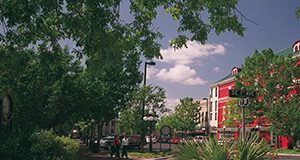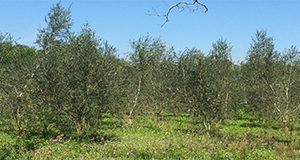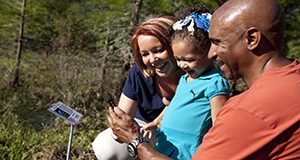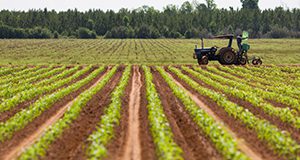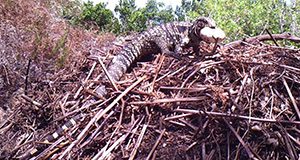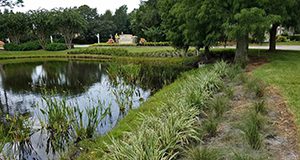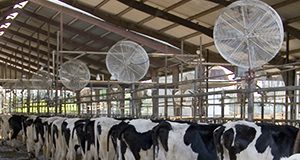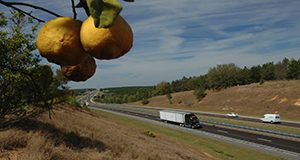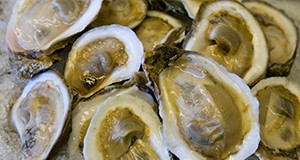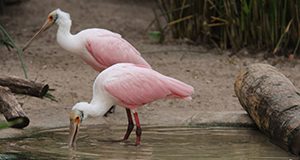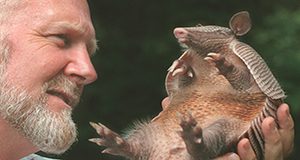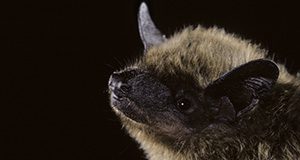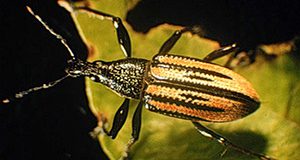This 2-page fact sheet written by Michael G. Andreu, Caroline A. Hament, David A. Fox, and Robert J. Northrop and published by the UF/IFAS School of Forest Resources and Conservation describes a 2016 ecological assessment of the urban forest in the city of Gainesville, FL. It provides a detailed look into some of the economic and ecological values of the forest to enhance understanding and improve urban forest policies, planning, and management, as well as to provide empirical data for the inclusion of trees within environmental regulations.
http://edis.ifas.ufl.edu/fr417
Author: Susan Gildersleeve
Develop Your Own Florida Olive IPM Plan
To remain in optimal health and produce optimal yield, olive trees need excellent nutrition, the right irrigation, and good care to help them stay healthy so that they can withstand injury from pests and diseases. This 10-page fact sheet written by Morgan Byron, Eleanor Phillips, and Jennifer L. Gillett-Kaufman and published by the UF/IFAS Entomology and Nematology Department touches on some aspects of olive tree health that will help improve your trees' natural resistance to pests and pathogens. At the end of the guide is a monthly care and observation schedule to help you recognize when you should begin scouting for key pests and when important grove management decisions should be made.
http://edis.ifas.ufl.edu/in1251
Using iNaturalist to Contribute Your Nature Observations to Science.
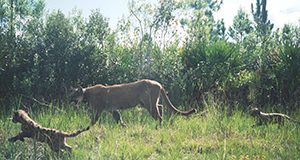
iNaturalist is one of the most popular citizen science data portals in the world. Citizens can submit pictures of biological observations to an online data base to be reviewed by the rich online community and used for important biodiversity research around the world. Users can use the iNaturalist ap to plan community projects and bioblitzes and learn more about species identification and biodiversity. In this 5-page fact sheet, authors Matthew Earl Boone and Mathieu Basille explain how observations are vetted and used and give a step by step guide to get started! Published by the UF/IFAS Department of Wildlife Ecology and Conservation.
http://edis.ifas.ufl.edu/uw458
Opening the Door to Nature: Accounting for People’s Constraints to Nature-based Recreation
Although millions of people recreate in parks, forests, and other conservation areas in the United States every year, research shows that some are left out; not everyone takes advantage of natural areas for the numerous benefits nature-based recreation provides. Results show that many people who do not participate in nature-based recreation feel constrained by their quality of time, not the quantity of time. In other words, they're saying, "Prove to me that it's worth my time to go out in nature. Show me something cool!" Based on research conducted in Hillsborough County, Florida and similar studies, this 6-page fact sheet written by Margaret E. Gullion and Taylor Stein and published by the UF/IFAS School of Forest Resources and Conservation addresses identifies strategies to improve the opportunities natural areas can provide a diverse public.
http://edis.ifas.ufl.edu/fr415
Understanding Investment Analysis for Farm Management
Investment decisions are among the most important decisions growers make. In many cases, those investments are in capital assets such as establishing a new orchard or purchasing a new piece of equipment. The process for evaluating those investments is called investment analysis or capital budgeting. This 4-page fact sheet written by Julio Cruz and Ariel Singerman and published by the UF/IFAS Food and Resource Economics Department reviews net present value and the internal rate of return, the two main criteria for decision making when evaluating a decision to invest in a capital asset.
http://edis.ifas.ufl.edu/fe1060
Marketing Florida-Friendly Landscapes to Florida Homeowners

Useful to retail and landscape firms who are interested in encouraging FFL-related purchases and installations, this 3-page fact sheet written by Hayk Khachatryan, Alicia Rihn, and Caroline R. Warwick and published by the UF/IFAS Food and Resource Economics Department is an overview of how both DIY homeowners and those who hire professional landscaping service providers perceive the value of residential landscapes and the best methods to encourage them to purchase or install FFL.
http://edis.ifas.ufl.edu/fe1063
Large Lizard Lineup for South Florida
Non-native reptile species breeding in Florida, tegus, monitors, and iguanas from Africa, South America, Central America, and Mexico, currently outnumber native Florida reptiles. This trifold brochure written by Justin Dalaba and Frank Mazzotti and published by the UF/IFAS Wildlife Ecology and Conservation Department serves as a guide to several commonly confused species.
http://edis.ifas.ufl.edu/uw459
Values and Ecosystem Services of Gainesville’s Urban Forest in 2016
The urban forest is a crucial factor in the well-being of a community because of the aesthetics, health benefits, and cost-savings that it provides. The urban forest is our habitat, and we must manage it in ways that will provide the benefits we need and desire. This 3-page fact sheet written by Michael G. Andreu, Caroline A. Hament, David A. Fox, and Robert J. Northrop and published by the UF/IFAS School of Forest Resources and Conservation describes an urban forest ecological analysis conducted in 2016 in Gainesville, Florida, by the University of Florida in partnership with the Parks, Recreation, and Cultural Affairs Department to quantify the vegetation structure, functions, and values of the urban forest.
http://edis.ifas.ufl.edu/fr414
Managing Plant Pests with Soaps
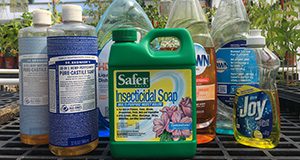
Home gardeners and professionals frequently discuss the use of soap products to control plant pests. Limited and conflicting information on this topic has resulted in confusion and misuse of products. It is important to recognize that all soaps are not equal in safety or efficacy in plant-pest management. This 5-page fact sheet written by Matthew A. Borden and Adam G. Dale and published by the UF/IFAS Entomology and Nematology Department describes some of the different types of soaps and recommendations for proper, legal, and safe use of these products to manage pests.
http://edis.ifas.ufl.edu/in1248
A New Database on Trait-Based Selection of Stormwater Pond Plants
Stormwater ponds play critical roles for flood control and water quality treatment, and they can provide ecological services to communities. Those ecological services can be enhanced with proper pond design and maintenance. This 6-page fact sheet written by Gisele P. Nighswander, Mary E. Szoka, Kayla M. Hess, Eban Z. Bean, Gail Hansen de Chapman, and Basil V. Iannone III and published by the UF/IFAS School of Forest Resources and Conservation provides a comprehensive database of plant traits to help readers make informed stormwater pond plant selection decisions based on their own relative priorities.
http://edis.ifas.ufl.edu/fr416
Recognizing Heat Stress in Dairy Cows
In persistent hot, sunny and humid conditions, cows can become overheated and may not produce as well, or may experience health issues. This two-page fact sheet written by Izabelle Toledo and Geoffrey Dahl and published by the UF/IFAS Department of Animal Sciences lists the signs of heat stress in dairy cows.
http://edis.ifas.ufl.edu/an356
El Mandato del Dispositivo de Registro Electrónico, reglas de las horas de servicio e Implicaciones para los Transportistas de Productos del Sudoeste de Florida
El Mandato del Dispositivo de Registro Electrónico (ELD por sus siglas en ingles), se convirtió en mandato para vehículos motorizados comerciales (CMV) el 18 de diciembre del 2017. El 18 de junio del 2018, después de 90 días de extensión, el mandato también se aplicó a transportistas de productos. El propósito principal detrás del ELD fue asegurar el cumplimiento con los requerimientos de Horas de Servicio (HOS) por autotransporte y sus conductores. Este artículo se enfoca en el movimiento interestatal de propiedades (productos), and sus objetivos son: 1) revisar las reglas HOS; 2) clarificar las excepciones agrícolas a las reglas HOS; y 3) ofrecer una discusión preliminar a cómo los ELD podrían afectar a los productores del sur de Florida. Fritz Roka, Tara Wade, Luis Peña-Lévano, y Craig Sprouse. UF/IFAS Food and Resource Economics Department.
http://edis.ifas.ufl.edu/fe1058
The Structure and Composition of Gainesville’s Urban Forest in 2016
Trees in cities were formerly thought of merely as a collection of individuals found along streets and incorporated into landscaping. However, urban trees are now viewed as being part of a unique forest type, and understanding the urban forest’s structure and composition is an important first step towards managing it. This 4-page fact sheet written by Michael G. Andreu, Caroline A. Hament, David A. Fox, and Robert J. Northrop and published by the UF/IFAS School of Forest Resources and Conservation aims to provide a broader understanding of the urban forest in the city of Gainesville, Florida.
http://edis.ifas.ufl.edu/fr413
Tetraploid Induction and Establishment of Breeding Stocks for All-Triploid Seed Production
Triploid-tetraploid breeding technology has been applied to commercial oyster aquaculture worldwide. Triploid oysters are becoming the preferred aquaculture product because of their fast growth, better meat quality, and year-round harvest. Tetraploids are essential for triploid oyster aquaculture because commercial production of all-triploid seed depends on the availability of tetraploids for reproductive materials. This 8-page fact sheet written by Huiping Yang, Ximing Guo, and John Scarpa and published by the UF/IFAS School of Forest Resources and Conservation, Program in Fisheries and Aquatic Sciences, conveys basic knowledge about tetraploid induction and breeding to commercial shellfish culturists and the general public.
http://edis.ifas.ufl.edu/fa215
BioBlitzes: Citizen Science for Biodiversity in Florida
This 5-page fact sheet written by Mathieu Basille and Kathryn Stofer and published by the UF/IFAS Wildlife Ecology and Conservation Department is the first of a series designed to help Extension faculty and others interested in hosting citizen-science events known as BioBlitzes. Together, these documents will assist organizers in launching events in their regions, recruiting participants, and sustaining the program over time. This document will focus on the background and purpose of BioBlitzes to help these hosts understand and share with potential participants and other stakeholders the importance and value of the events. Other documents will focus on the details of organizing the events and, for participants, why and how they can get involved.
http://edis.ifas.ufl.edu/uw449
Wildlife of Florida Factsheet: Nine-banded Armadillo
Learn more about nine-banded armadillos!
The Wildlife of Florida Factsheet series was created to provide the public with a quick, accurate introduction to Florida’s wildlife, including both native and invasive species. Authors Simon Fitzwilliam and Raoul Boughton hope this 2-page quick guide and others in the series published by the UF/IFAS Department of Wildlife Ecology and Conservation will inspire readers to investigate wildlife in their own backyards and communities and understand the amazing biodiversity of wildlife in the state of Florida.
http://edis.ifas.ufl.edu/uw456
Bats of Florida Poster
This poster, created by Meghan E. Lauer and Holly K. Ober and published by the UF/IFAS Department of Wildlife Ecology and Conservation shows photographs of the 13 species of bats that are resident to Florida. Text associated with each photo tells the common and scientific name of each species, as well as information on the types of structures in which each commonly roosts.
http://edis.ifas.ufl.edu/uw457
Economic Value of Florida Water Resources: Valuing the Quality of Water for Household Needs
Florida water-resource professionals deciding whether to implement a costly water protection program or to invest in better tap water treatment technology may wonder: Are such investments justified? What are the benefits of the program or investment decision? Just how highly do Floridians value their water? This 5-page fact sheet written by Tatiana Borisova, Syed Irfan Ali Shah, Tara Wade, Xiang Bi, and Kelly Grogan and published by the UF/IFAS Food and Resource Economics Department reviews studies that help assess the value Floridians assign to maintaining or improving the quality of the water supply.
http://edis.ifas.ufl.edu/fe1059
Methods to Relieve Heat Stress for Florida Dairies
The hot and humid weather in Florida affects dairy cattle performance throughout the year, and producers who hope to achieve optimum production from their dairy cows must provide them with relief from heat and humidity. This 4-page fact sheet written by I. M. Toledo, G. E. Dahl, R. A. Bucklin, and D. K. Beeke and published by the UF/IFAS Department of Agricultural and Biological Engineering describes several cooling strategies to alleviate heat stress in dairy cattle.
http://edis.ifas.ufl.edu/ae022
Diaprepes Root Weevil on Southern Highbush Blueberry in Florida
Citrus root weevil, Diaprepes abbreviatus (Linnaeus) is a destructive pest on citrus trees. It is now becoming a significant pest on blueberry in central Florida, at times causing major damage to blueberry bushes that are more than two years old. This 3-page fact sheet written by Douglas A. Phillips, Oscar E. Liburd, and Larry W. Duncan and published by the UF/IFAS Entomology and Nematology Department will educate blueberry growers on how to monitor, identify, and control citrus root weevil.
http://edis.ifas.ufl.edu/in1241
